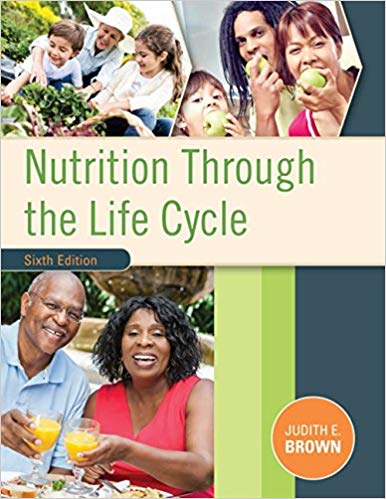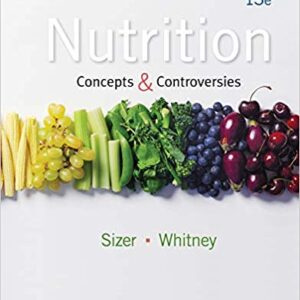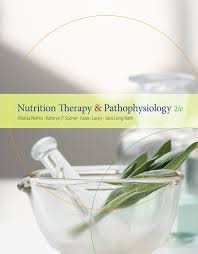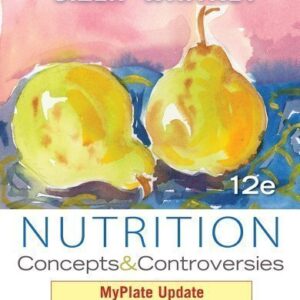Nutrition Through the Life Cycle 6th Edition By Judith E. Brown – Test Bank
Key to question information: ANS = correct answer; DIF = question difficulty; REF = page reference; OBJ = chapter learning objective for question section
Learning Objectives
3.1 Identify the symptoms of premenstrual syndrome and the effect of PMS treatment strategies on fertility status of women with the syndrome.
3.2 Explain the primary mechanisms that underlie the effects of obesity and underweight on fertility in women and men.
3.3 Identify two mechanisms by which a negative energy balance can influence fertility.
3.4 Identify two ways in which good blood glucose control during the periconceptional period can benefit fetal growth and development.
3.5 Cite three key components of the nutritional management of PCOS.
3.6 Identify the major reasons why dietary control of PKU is particularly important during pregnancy.
3.7 Describe three nutritional consequences of untreated celiac disease.
Multiple Choice
1. The definition of the periconceptional period is _____.
a. the developing organism from 8 weeks to the moment of birth
b. the month before conception
c. the time period around conception measured in weeks or months
d. the month after conception
e. None of the above
ANS: c DIF: Fact-based, easy REF: 71 OBJ: 3.1
2. Premenstrual dysphoric disorder (PMDD) is characterized by:
a. mood swings.
b. irritability.
c. depressed mood.
d. physical symptoms.
e. All of the above
ANS: e DIF: Fact-based, medium REF: 71 OBJ: 3.1
3. Which of the following would NOT be used to treat PMS symptoms?
a. Increased intake of caffeine
b. Oral contraceptives
c. Supplements like B6 or calcium
d. Chasteberry extract
e. Antidepressants
ANS: a DIF: Fact-based REF: 71-72 OBJ: 3.1
4. Which of the following would NOT be considered a sign or symptom of premenstrual syndrome?
a. Swollen glands under the jaw
b. Fatigue
c. Abdominal bloating
d. Mood swings
e. Anxiety
ANS: a DIF: Fact-based REF: 71 OBJ: 3.1
5. Symptoms of PMS occur in about _____ of menstruating women.
a. 10-12%
b. 27-30%
c. 34%
d. 15-25%
e. 55%
ANS: d DIF: Fact-based REF: 71 OBJ: 3.1
6. Untreated phenylketonuria in pregnant women can lead to:
a. increased risk of heart defects in the infant.
b. infants with microcephaly.
c. severe mental retardation in children.
d. All of the above
e. a and b only
ANS: d DIF: Application-based, hard REF: 80 OBJ: 3.6
7. A nutrient that would effectively treat headaches and cramps in a woman with PMS is _____.
a. vitamin B6
b. calcium
c. magnesium
d. vitamin E
ANS: b DIF: Fact-based, easy REF: 72 OBJ: 3.1
8. _____ is the first therapeutic option for infertility in obese people.
a. Medication
b. Weight loss
c. Hormone therapy
d. In-vitro fertilization
e. Surgery
ANS: b DIF: Application-based REF: 74 OBJ: 3.2
9. Excess central body fat is related to _____.
a. insulin resistance
b. ovulatory disorders
c. metabolic syndrome
d. All of the above
ANS: d DIF: Fact-based, easy REF: 72 OBJ: 3.2




